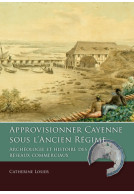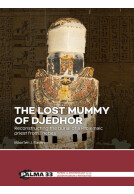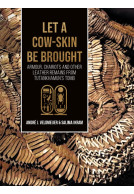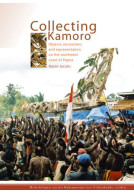Dem Wandel auf der Spur (Paperback)
Bauen und Wohnen in Monjukli Depe und Umgebung, Turkmenistan
Imprint: Sidestone Press
Pages: 340
Illustrations: 60fc / 84bw
ISBN: 9789464280968
Published: 20th August 2025
Script Academic & Professional
Pages: 340
Illustrations: 60fc / 84bw
ISBN: 9789464280968
Published: 20th August 2025
Script Academic & Professional
You'll be £55.00 closer to your next £10.00 credit when you purchase Dem Wandel auf der Spur. What's this?
+£4.99 UK Delivery or free UK delivery if order is over £40
(click here for international delivery rates)
Order within the next 11 hours, 20 minutes to get your order processed the next working day!
Need a currency converter? Check XE.com for live rates
(click here for international delivery rates)
Order within the next 11 hours, 20 minutes to get your order processed the next working day!
Need a currency converter? Check XE.com for live rates
Die ersten Gemeinschaften von Ackerbauern und Viehzüchtern traten im Kopet-Dag-Vorland in Südturkmenistan Ende des 7. Jahrtausends v. Chr. auf und läuteten eine lange Geschichte dörflichen Lebens in Lehmziegelbauten ein. Dieses Buch untersucht das Bauen und Wohnen der frühen Bauern und Bäuerinnen Zentralasiens anhand architektonischer Befunde und geht der Frage nach, wie diese Menschen ihre Wohnräume gestalteten. Mit einer diachronen Betrachtung und einem Fokus auf die Temporalität der Bau- und Wohnpraktiken beleuchtet der Autor sowohl den Wandel als auch die Kontinuitäten in der Gestaltung des Wohnraums, die über bemerkenswert lange Zeiträume hinweg Bestand hatten.
Die Analyse erfolgt auf zwei Ebenen. Auf der Mikroebene wird die Nutzungsgeschichte und Architektur einzelner Häuser in Monjukli Depe untersucht. Dieser Fundort wurde 2010–2014 durch ein Team der Freien Universität Berlin ausgegraben. Besondere Beachtung finden die Lebenszyklen der Häuser – von ihrem Bau über die Nutzung bis hin zur Aufgabe und Umnutzung. Diese individuellen Hausgeschichten bieten ein differenziertes Bild der Raumnutzung im äneolithischen Dorf, zeigen aber auch viele Gemeinsamkeiten, die auf geteilte Vorstellungen über Hausbau, Wohnen und den Umgang mit Hausruinen hindeuten.
Auf der Makroebene wird die Entwicklung des gebauten Raums über im Zeitraum 6200–2700 v. u. Z. betrachtet. Die Analyse der großflächig ausgegrabenen neolithischen und äneolithischen Fundstellen des Kopet-Dag-Vorlands ermöglicht es, langfristige Entwicklungen in der Raumorganisation dörflicher Siedlungen in der Region zu identifizieren. Diese Ergebnisse werden mit bestehenden Narrativen zur gesellschaftlichen Entwicklung in Zentralasien verglichen und tragen zu einem tieferen Verständnis von Kontinuitäten und Veränderungen in der prähistorischen Siedlungsweise bei.
English abstract
The first communities of farmers and herders appeared in the Kopet Dag foothills of southern Turkmenistan at the end of the 7th millennium BCE, heralding a long history of village life and mud-brick construction. This book uses architectural and other archaeological evidence to examine the practices of building and dwelling of the early farmers of Central Asia. With a diachronic approach and a focus on the temporality of building and dwelling practices, the author illuminates both the changes and continuities over remarkably long periods of time in the way living space was arranged and used.
The analysis is conducted on two levels. On the microscale, I. Heit examines the history of construction and use of individual houses in Monjukli Depe. This site, which was occupied in the Neolithic and early Aeneolithic, was excavated from 2010 to 2014 by a team from the Freie Universität Berlin. In the analysis underlying this book, particular attention is paid to the life cycles of the houses, from their construction and use to their abandonment and re-use. The individual house histories offer a differentiated picture of the use of space in the Aeneolithic village but also show many similarities that indicate shared ideas of house construction, living and the ways of dealing with house ruins.
On the macroscale, the author examines the development of built space over a period from 6200–2700 cal BCE. The analysis of the extensively excavated Neolithic and Aeneolithic sites of the Kopet Dag foreland reveals long-term developments in the spatial organization of village settlements. These results are compared with previous narratives of societal development in Central Asia and contribute to a deeper understanding of continuities and changes in prehistoric lifestyles there.
Other titles in Sidestone Press...















